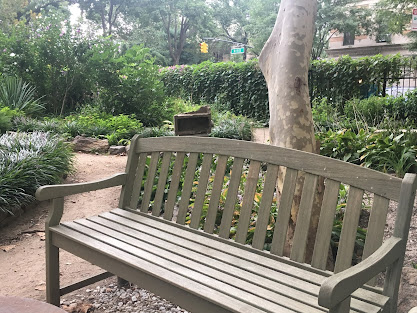 |
| A fake of the masterpiece painting by brilliant painter, Goya "City on a Rock" - photo Creative Commons |
by Gregory Saville
I recently spoke to some senior administrators about Crime Prevention Through Environmental Design (CPTED) and how they might use it to cut crime. They knew a little about the concept, but it was clear that they had been victims of fake news. It brought to mind an old question in philosophy: What does authentic actually mean? Why should you care?
You should care because many of the ingredients that flavor a high-quality life depend on authentic products, systems, and technologies that we now take for granted. Consider food and water. Governments regulate and inspect our food/water supply and require that those who produce or ship it must follow standards of hygiene and public health.
Millions of deaths throughout history were caused by infected food or unregulated water systems that transmitted diseases like typhoid. Today, mass deaths from food or water are rare in most of the developed world and, thankfully, increasingly rare in the undeveloped world. Authentic public health matters.
It’s the same in crime prevention. Authenticity matters a great deal for your own livability.
CPTED AND AUTHENTICITY
How does one determine authentic CPTED and effective crime prevention?
Dictionaries describe authenticity as something supported by unquestionable evidence and verified and accepted as real “because of agreement with known facts or experience.”
 |
| The Detroit police "Green Light" crime prevention zone uses CCTV surveillance to make it safe. Some reports suggest otherwise. |
There is a great Ted Talk by Daniel Levitin, a neuroscientist and cognitive psychologist, who describes ways to compare authentic facts from fake news. I have drawn on some tips from Dr. Levitin, and applied them to crime prevention and CPTED:
“LIES ARE TUCKED INTO THE TRUTH”
Early writing about CPTED described cutting hedges for better visibility and territorial markers to help residents control their own properties. That was 50 years ago and crime prevention science has learned much since then. CPTED has grown up. It now includes 2nd Generation CPTED to build community cohesion and pro-social activities. CPTED is no longer just surveillance, blight removal or painting murals to enhance community pride. If you want to know the latest, go to the website of the only non-profit, professional and international organization for CPTED – the International CPTED Association (ICA), or the regional affiliate chapters of the ICA.
“WEBSITES MASQUERADE UNDER MISLEADING NAMES”
When searching online for CPTED expertise or training be careful to locate names, bios and expertise of those behind the website or delivering the course. If you cannot easily find those names, bios, or expertise - in plain view - go elsewhere. Never assume because the website claims it is a “national” center or it provides “certification” that is true. Check to see if they are affiliated with the ICA. Check to see if that site is for-profit, or non-profit. Follow the money!
Does that website provide the names of a diverse group of experts with a wide variety of experience, because that is how CPTED actually works. Otherwise, you are probably dealing with a small group of for-profit consultants – usually retired police or security. Don’t misunderstand; I have no problem with for-profit consultants with policing, criminology or urban planning expertise (I am one of them!) But, they come with different qualities, experiences and reputations. As they say – caveat emptor.
 |
| CPTED target hardeners say this New York bench should have dividers to prevent homeless sleeping. Really? |
“CLAIMS THAT REST ON FALSE SOURCES”
The problem in CPTED today is “authorities” who do not read the source material or the related scientific research. They make wild claims like “lighting prevents crime”. It doesn’t! With the right research and in the right context, it might help! But that’s far from a done deal. Or they offer inauthentic facts and claim “eyes on the street” cut crime. Strategies like natural surveillance or even CCTV might help in the right location, with the right pre-diagnosis. But that is not a definitive fact. Claiming otherwise is not only inauthentic, it’s wrong.
If you want authentic expertise, read historical bibliographies of the science, read the latest studies, or ask a formally certified CPTED practitioner who holds a professional certification from the ICA. Embrace authenticity.
Leave a comment
Please add comments to SafeGrowth. I will post everyone except posts with abusive, off-topic, or offensive language; any discriminatory, racist, sexist or homophopic slurs; thread spamming; or ad hominem attacks.
If your comment does not appear in a day due to blogspot problems send it to safegrowth.office@gmail.com and we'll post direct.